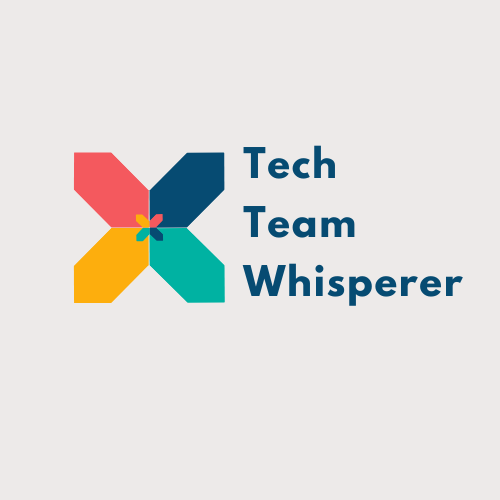Reimagining Technology Adoption: What If We Expected It to Be Easy?
I recently decided to move operating systems, which involved a significant data migration process. As I steeled myself to call IT Support, I found myself expecting the call to be terse, frustrating, and being told that they would need to ‘call me back’ multiple times. Realising no one was going to win with this attitude, I set an intention to have a call where ‘it feels easy, even when we are trying to figure things out’. Low and behold, myself and Rapul were laughing about the technical term of ‘crossing our fingers’ as we moved through the process. This got me thinking, how many times do we approach Tech Innovation and Change with the attitude that this will be a hard slog?
Let’s be real—digital transformation is complex. According to McKinsey, 70% of efforts in this space fail, often due to resistance, lack of training, or inadequate leadership support. But what if we reframed it? What if, instead of bracing for battle, we geared up for a process that felt intuitive, collaborative, and (dare I say it?) empowering?
1. Shifting the Mindset: What Happens When We Expect Flow?
We’ve been conditioned to expect friction. But what if the friction is, in part, a result of that expectation?
Leaders who set the tone for ease often unlock new levels of agility in their teams. By starting with the belief that technology adoption can feel seamless, they:
Plan proactively rather than firefighting once problems appear.
Frame tech as an enabler, not a disruptor—shaping a narrative that builds curiosity and confidence.
Simplify intentionally, designing workflows and systems that actually work for people, not against them.
Take Starbucks, for example. Their mobile payment success didn’t happen by accident. It came from deeply investing in engagement and training, resulting in 20% sales uplift in one year.
2. Making Tech Adoption a Team Sport
When business and tech teams stop sitting on opposite sides of the table, something beautiful happens. Silos dissolve, and adoption becomes less about “convincing” people and more about co-creating solutions that actually work.
When we expect collaboration, we get:
Aligned priorities between tech and business functions.
Empowered users who feel part of the process, not subjected to it.
Real-time feedback, so we can pivot fast, rather than post-mortem fix.
Think about Microsoft under Satya Nadella—he didn’t just restructure; he rewired the company culture around learning and empathy, encouraging Leaders to share the situations where they ‘didn’t yet know, but would find out’. That mindset shift redefined what tech adoption could look like, propelling Microsoft to the position it is in today.
3. Building Capacity with Confidence
Now, to be clear: expecting ease doesn’t mean skipping the prep. It means making that prep feel empowering, not overwhelming.
That looks like:
Modular, personalizsed training, not one-size-fits-all decks.
Leadership grounded in emotional intelligence, so teams feel supported, not steamrolled.
Scalable systems, where growth isn’t limited by outdated architecture and clunky learning management systems.
4. Designing Tech That Feels Effortless—for Everyone
Let’s bring it back to the customer. Because when our internal adoption flows, so does the experience we deliver.
With a mindset focused on ease, we see:
Customer-first design, where every click and touchpoint just works.
Faster time-to-market, because we’re not bogged down by unnecessary complexity.
Personalisation that feels intuitive, powered by connected, intelligent systems.
Starbucks didn’t just implement mobile payments—they reimagined the point-of-sale experience to match how customers actually wanted to engage. That 20% boost in sales? It’s what happens when ease meets insight.
Remember, all great digital transformation experiences start with excellent customer journey maps.
5. Letting Innovation Happen (Instead of Forcing It)
When we stop treating innovation like a checkbox and start creating space for it to flow, people show up differently.
Ease in innovation looks like:
Safe-to-try environments, where experimentation is part of the rhythm.
Agile iteration, where progress beats perfection. Let’s take imperfect action and see what we can learn on the way.
A culture of creativity, where ideas can breathe and evolve.
So, What If We Actually Expected It to Be Easy?
Imagine a world where:
Resistance fades because people feel invited into the process.
Business and tech teams move in lockstep, designing for real needs.
Capacity-building feels empowering, not exhausting.
Customers feel like every interaction is just… simple.
Innovation shows up, not as a bolt of lightning, but as a natural next step.
The shift starts with mindset—but it doesn’t end there. When we pair that mindset with the right strategies, we’re not just surviving digital transformation—we’re thriving through it.
Let’s stop bracing for the worst and start designing for the best. Because the future of technology adoption doesn’t have to be hard. In fact, it might just be easier than we think.
Want to co-create tech change that feels more human, more natural, and more aligned? Let’s talk.
